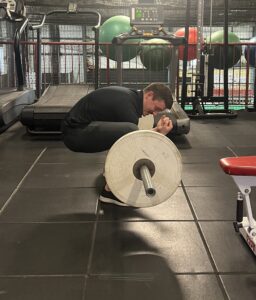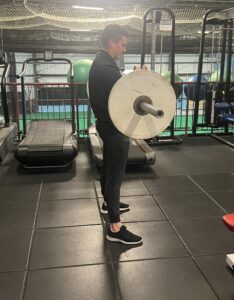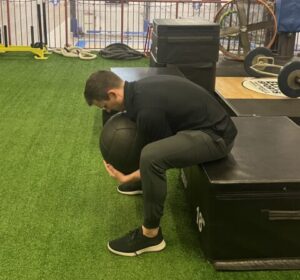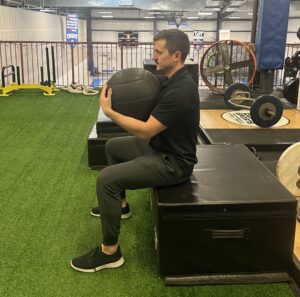Standing Up to Back Pain!
Back pain is one of the most prevalent health issues in first world countries. It is estimated that up to 80% of people will experience low back pain at one point in their life. It contributes to the highest amount of time out of work and missed recreational activities across all issues that we face today. It can sometimes feel insurmountable and there are a lot of voices out there providing information about it that might not exactly be the best advice. Were not not here to say that we have the best advice to provide, but below are some ideas as to how you can get yourself back to 100% after you have that “oh no” moment.
The number one thing you can do for yourself is to not panic. 80-95% of low back pain episodes will get significantly better within 6 weeks and often completely dissipate, according to many studies. There is also a really low probability that there is anything significantly wrong. A systematic review in 2015 of over 3100 asymptomatic (that means NO pain) individuals from 20 to 80 years old saw “pathological” findings in the lumbar region relating to “disc degeneration” and “disc herniation” anywhere from 30% in 20 year olds to over 90% in 80 year olds. These findings suggest that you are not your imaging and your imaging results should not define your pain!
Another thing to rest assured about is that there is a very low (less than 2%) chance that that new onset of low back pain is the result of any serious pathology that needs to be addressed emergently. Several studies of multiple thousands of folks presenting to the ED with acute low back pain corroborate this for us. So, take a breath!
There are a few things that you can do right off the bat to put yourself in the best position for a full recovery:
1. Maintain a positive outlook: Understanding that most acute low back pain gets better pretty quickly and that if you have the expectation that it will get better: it probably will. A multi-disciplinary study observed that “patients who expected their back problem to last a long time, who perceived serious consequences, and who held weak beliefs in the controllability of their back problem were more likely to have poor clinical outcomes 6 months after they consulted their doctor.” This is regardless of severity, intervention, and any findings on imaging.

2. Keep it moving: It may sound a little bit crazy but most research available to us suggests that regardless of back pain being uncomfortable, the best thing you can do is keep moving. Bend to a tolerable level, go for frequent short walks, or get on a stationary bike. Cardiovascular exercise and light movement within a mild to moderate pain range has been shown time and time again to be the best thing we can do for most acute injuries! And don’t JUST lie down. A study dating all the way back to 1995 observed patients with first time acute low back pain and found that advice to attempt “ordinary activity” within tolerance was far superior in recovery than bed rest. Rest is important, but make sure you get up frequently and move around.

3. Skip the “Google MD” and fitness/rehab influencers: There is no such thing as a “best exercise to get rid of your back pain.” Be wary of any person or gadget online that “guarantees success” or “everyone NEEDS to do this” or “this is the single worst thing you can do for your back.” We haven’t found any validated study that look at any “at-home back-crack-o-matic for only $500” that suggests that there is anything on the market that “you need in order to get better.” And anyone that talks in broad absolutes, should at the very least be questioned if not disregarded.
4. Take control : Back pain can make us feel a bit helpless at times. But combining the first two points and taking back some self-efficacy has been suggested to improve your outcome significantly. Your perception becomes your reality!
5. The Power of Mindfulness: A longitudinal study assessing the 3 year incidence of new acute low back pain in veterans between the ages of 25-70 found that the number one correlated risk factor for developing low back pain was actually episodes of depression, rather than new findings on imagining. That’s not us claiming your back pain is because you’re depressed, but to get us all thinking about how multifactorial pain really is. Making sure you are checking in with yourself, eliminating stressors when possible, getting good sleep, and eating a balanced diet may be protective and improve resiliency for the “twinge” every now and again.
6. Seek the right help, sooner rather than later: Most of the time, your pain will get better, regardless of what you do for it. However, a licensed Physical Therapist is able to help you modify your day so that you can still exercise, work, and enjoy all of your recreational activities with the least amount of discomfort possible. We can help support you and steer you in the right direction every step of the way. Coming to see a Physical Therapist first will greatly reduce the chance that patients receive unnecessary imaging, injections, and surgeries which means less money out of your pocket, less physician visits, and a quicker return to the activities you enjoy.

If you or a loved one are dealing with back pain, we can help! With convenient locations in Stoughton & Foxborough, Elite has a team of highly trained Physical Therapists who will work with you to decrease your pain, improve your strength, mobility and function, and get you back to enjoying your favorite activities and an active lifestyle. To schedule an appointment with one of our PTs, visit HERE for more details!

References:
- *Radiology, From the Departments of. “Three-Year Incidence of Low Back Pain in an
Initially… : Spine.” LWW, journals.lww.com/spinejournal/abstract/2005/07010/three_year_incidence_of_low_back_pain_in_an.14.aspx. Accessed 10 Jan. 2024. - Cecilie Rud Budtz a, et al. “The Prevalence of Serious Pathology in Musculoskeletal Physiotherapy Patients – A Nationwide Register-Based Cohort Study.” Physiotherapy, Elsevier, 14 Mar. 2021, www.sciencedirect.com/science/article/pii/S0031940621000237.
- Gabriela Galliker MD a, et al. “Low Back Pain in the Emergency Department: Prevalence of Serious Spinal Pathologies and Diagnostic Accuracy of Red Flags.” The American Journal of Medicine, Elsevier, 3 July 2019,
www.sciencedirect.com/science/article/abs/pii/S0002934319305406. - Nadine E. Foster a, et al. “Illness Perceptions of Low Back Pain Patients in Primary Care: What Are They, Do They Change and Are They Associated with Outcome?” PAIN®, No longer published by Elsevier, 3 Mar. 2008,
www.sciencedirect.com/science/article/abs/pii/S0304395907007282. - Keedy, Nicole H, et al. “Health Locus of Control and Self-Efficacy Predict Back Pain Rehabilitation Outcomes.” The Iowa Orthopaedic Journal, U.S. National Library of Medicine, 2014, www.ncbi.nlm.nih.gov/pmc/articles/PMC4127740/.
- Physiotherapy, From the *School of. “Early Intervention for the Management of Acute Low Back… : Spine.” LWW, journals. lww.com/spinejournal/abstract/2004/11010/early_intervention_for_the_management_of_acute_low.3.aspx. Accessed 10 Jan. 2024.
